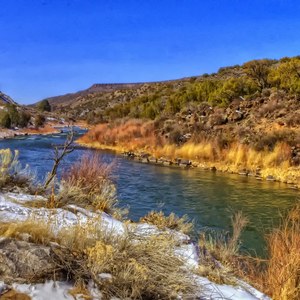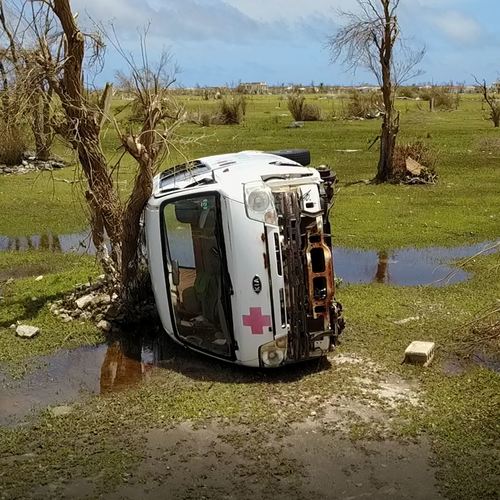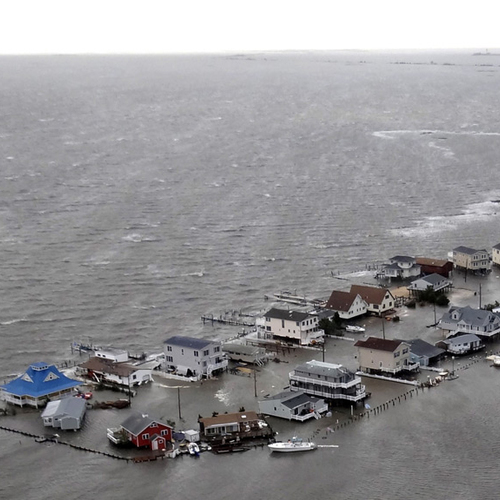
One of the great challenges of tackling climate change is making it real for people without a scientific background. That’s because the threat it poses can be so hard to see or feel.
In the wake of Hurricanes Florence and Michael, for example, one may be compelled to ask, “Was that climate change?” Many politicians and activists have indeed claimed that recent powerful storms are a result of climate change, yet it’s a tough sell.
What those who want to communicate climate risks need to do is rephrase the question around probabilities, not direct cause and effect. And for that, insurance is the proverbial “canary in the coal mine,” sensitive to the trends of climate change impacts and the costly risks they impose.
In other words, where scientists and educators have had limited success in convincing the public and politicians of the urgency of climate change, insurance companies may step into the breach.
Steroids and climate change
Dr. Jane Lubchenco, an environmental scientist who oversaw the National Oceanic and Atmospheric Administration from 2009 to 2013, offers a clever analogy to convince people of the connection between the destruction wrought by a single hurricane and climate change. It involves steroids and baseball.
Her analogy goes like this. If a baseball player takes steroids, it’s hard to connect one particular home run to his drug use. But if his total number of home runs and batting averages increase dramatically, the connection becomes apparent.
“In similar fashion, what we are seeing on Earth today is weather on steroids,” Lubchenco explains. “We are seeing more, longer lasting heat waves, more intense storms, more droughts and more floods. Those patterns are what we expect with climate change.”
And those weather patterns come with a cost.
Someone has to pay for these damages
In 2017, for example, Hurricanes Harvey, Irma, and Maria and other natural disasters like Mexican earthquakes and California wildfires caused economic losses of $330 billion, almost double the inflation-adjusted annual average of $170 billion over the prior 10 years.
Estimated costs from Hurricane Florence, which struck the Carolinas in September, range as high as $170 billion, which would make Florence the costliest storm ever to hit the U.S.
More broadly, total economic losses from wildfires in the U.S. in 2017 — the third-hottest year on record, behind 2016 and 2015 — were four times higher than the average of the preceding 16 years and losses from other severe storms were 60% higher.
Unfortunately, convincing politicians, business leaders and the public that these costs are the result of increased climate change risk hasn’t been easy, a challenge that has been a major focus of my work for almost 10 years.
In 2013, I helped convene a series of executive forums to introduce a wide range of business executives to the 30 petabytes — 30,000,000,000,000,000 bytes — of weather and climate data in the National Climatic Data Center’s possession.
While the hope was that they would see the value of such vast amounts of data in managing climate risk, we found limited interest, leaving us to wonder if we were too early and whether our target was too broad.
This led me and others to realize that we should be more focused on insurance companies, society’s first line of defense in absorbing these costs, making their industry arguably the one most directly affected by climate change.
For example, the insurance industry paid out a record $135 billion from natural catastrophes in 2017, almost three times higher than the annual average of $49 billion. That’s not to mention the uninsured losses that were also incurred — uninsured losses from 2012’s Hurricane Sandy were 50% of the total $65 billion in losses, a staggering tab picked up by individual citizens and the taxpayer.
Insurers will eventually adjust to this emerging reality. And with it will come changes in our economy, including higher costs that will affect everyone’s pocketbook.
Our ability to drive a car, buy a house, build an office building, run a manufacturing plant, and enter into contracts are all supported by insurance. Without it, a great deal of these activities would become more expensive or even stop.
And so, as the insurance sector adjusts to factor the growing risks of climate change in coverage and premiums, it will become a powerful lever for pushing society and the economy to become more resilient to the changes that climate change is expected to bring.
A whole new ballgame
While reinsurance companies — which basically insure the insurers — have been studying increasing climate-related risks for decades, traditional insurance companies with familiar names like State Farm, Travelers, and Liberty Mutual haven’t.
There are two primary reasons for this. The first is that they’ve been able to pass on the most catastrophic or uncertain risks to reinsurers and other investors. The second is that insurers are overconfident that they’ll be able to quickly adjust their policies on a year-to-year basis to manage climate risks. Hence a 2012 study found that only 12% of insurance companies had a comprehensive climate change strategy.
This is starting to change. A 2018 study found that 38% of insurance companies now consider climate change to be a core business issue, a figure that will likely continue to grow.
In August of this year, the International Association of Insurance Supervisors, a respected international standard-setting body for the insurance sector, published a report outlining climate risk a strategic threat for the insurance sector. It cautioned against relying on annual adjustments to manage climate risks as physical risks can change suddenly and in “non-linear ways.”
Recognizing this threat, many insurers are throwing out decades of outdated weather actuarial data and hiring teams of in-house climatologists, computer scientists, and statisticians to redesign their risk models.
Ultimately they are examining if they need to change their coverage and raise their rates. This is where the impact will be felt, compelling citizens, businesses, and governments to perk up and pay attention.
And yet it changes
When Galileo Galilei upset dominant beliefs in the 16th century by asserting that the Earth revolved around the sun and was forced to recant, he is purported to have replied, “Eppur si muove,” meaning “and yet it moves.”
Today, although many dispute that the climate is changing, one might offer a similar retort: “And yet it changes.”
As humans persist in our emission of greenhouse gases, the climate continues to change, weather patterns become more unstable, damages due to hurricanes, wildfires, droughts, and floods increase, and insurance payouts grow.
In response, insurances premiums will increase and coverage will decrease. With any luck, that will lead us to build more resiliently, curb our greenhouse gas emissions, and ultimately see increased storm severity for what it is: a consequence of climate change.
Andrew J. Hoffman is Holcim Professor at the Ross School of Business and School of Environment and Sustainability at the University of Michigan. This post originally appeared at The Conversation.
Weekly Newsletter
Get building science and energy efficiency advice, plus special offers, in your inbox.















10 Comments
Nobody has the right to force me to pay for ones life choice of living in hurricane/wildfire/flood prone areas. Yes insurance claims in terms of dollars have skyrocketed but it's largely due to the degree of development and general price increases resulting from the availability of ultra-low cost credit.
John,
You pay other peoples life choices ALL THE TIME. You can't stop it.
Your car insurance rates cover drivers who drink and drive, text while driving, fall asleep at the wheel, are high when driving, etc.
Your health insurance rates pay for people who use drugs, smoke, eat poorly, are alcoholics, etc.
Your property taxes pay for people who use government & medical programs for drug use, abortions, STD's, etc.
I can go on and on with examples that you are forced into paying for other peoples life choices in many aspects of life. I guarantee where you live has some type of natural disaster risk. Maybe tornadoes, hail, high winds, earthquakes, sink holes, mud slides, etc
I can opt out of insurance. Here's what I know. I know that certain coastal properties in Florida are now beginning to flood during the king tide and market players are taking notice. Don't live in Florida or at least on the coast. People have the right to live where they can afford, but they don't have the right to figuratively "force me at the point of a gun" to subsidize that decision. The cost to insure is going to become so high that that taxpayer is going to be asked to provide a subsidy or an outright bailout. That's what I worry about.
Reminds me of when a governor of Florida suggested that the rest of the US help pick up the tab for hurricane relief in his state because we'd eventually move to or visit.
Oh and no, I don't live in an area which is prone to natural disasters.
John,
Not sure where you live but every place on earth has some type of natural environmental factor that plays into housing problem issues. I know of no place that is 100% immune to nature. Geez, even termites cause $5 BILLION dollars of damage per year to homes.
Regardless, we always have and always will pay for stuff we don't want to pay for. That's part of living life in the world and in a governmental system. I just helped pay for a $13 BILLION dollar aircraft carrier that isn't even working properly. I didn't want to pay for that but I did with my federal tax money.
So ALL OF US are eventually forced to subsidize something that we don't want to pay for. In your case, it's for anyone wanting to own a home in areas that experience natural disasters. In my case, it's for paying for the industrial military complex to spend $700 BILLION PER YEAR. To fund never ending wars that just result in wasted lives and money.
I would rather fund money to rebuild homes in the USA that have been devastated by natural disasters. Maybe build stronger homes that can withstand hurricanes and the such. I would rather fund that than endless and pointless wars that are pushing $2 TRILLION dollars and millions of lives lost since 2003.
My point is that YOU ARE subsidizing for things you don't want and there is NO WAY to opt out of it. NO WAY - ZERO. It's part of living in a governmental system. Unless you buy your own island and supply 100% of your own money and resources.
Indeed..
> insurances premiums will increase
Another effect will be the devaluation of high risk properties and population shifts away from them.
> wildfires in the U.S. in 2017
> In 2017, for example, Hurricanes
IMO, anything that encourages people to draw any conclusions from a single year's data is doing a disservice to the climate change problem. What happens when some future year is less than averages?
> Estimated costs from Hurricane Florence, ...range as high as $170 billion,
But more credible/recent estimates are far less - so this also adds to "false news" claims.
Another reason damage estimates are increasing is that the population is increasing, i.e. more people, buildings, etc. are in the paths of storms. It doesn't necessarily mean that the storms are becoming stronger.
Agree and there is a sort of moral hazard by encouraging people to live in areas which are subject to natural disasters. An ever expanding footprint coupled with increasing density means there's a higher chance of significant claims regardless of "climate change".
An interesting approach. I hope it works. I am skeptical because creative government "accounting" and scapegoating fool gullible voters.
My experience is the opposite of that in the article. I find that many folks today believe whole-heartedly in climate change, without understanding the slightest thing about science.
Log in or create an account to post a comment.
Sign up Log in